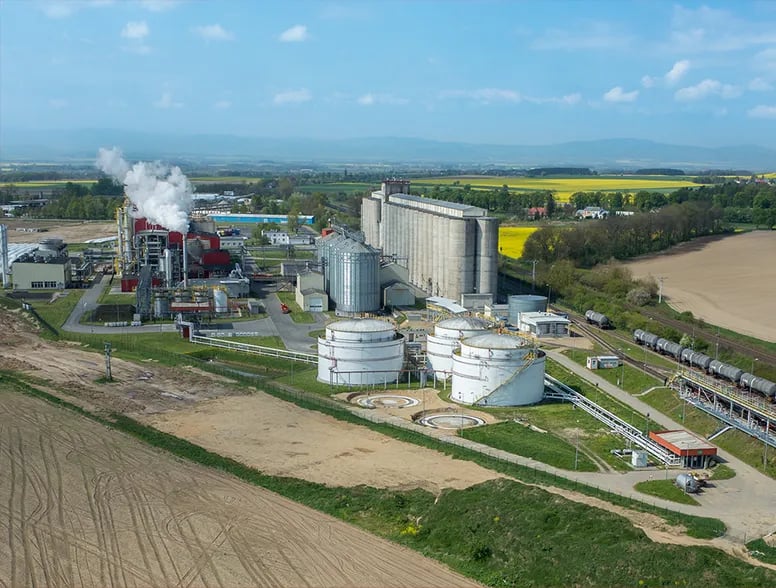Exploring The IRmadillo & Its Role In Ethanol Fermentation, Distillation, Propagation & Liquefaction Analysis
Bioethanol and biofuels productions are processes with natural and variable feedstocks, complex biochemical reactions, and at a potentially vast scale.


Testimonials
“The IRmadillo mid-infrared spectrometer is the most robust instrument that we have seen in the market for real time monitoring of ethanol fermentation. The spectrometer gives us better control of the fermentation process by providing real time information on how fermentation kinetics are progressing, in other words, how the sugars are being consumed and converted into ethanol”.
Julian Parra, Engineering and Technology
Manager Pannonia Bio
“The IRmadillo online analyzers, installed on fermentation vessels, have multiple benefits for an ethanol plant: because of their easy integration into the plant DCS system, they can work as an early warning system for plant operators to detect potentially faulty fermentation processes at a moment that correction is often still possible. Further, the continuous measurement allows identification small deviations from your standard fermentation curve that otherwise remain unnoticed. This knowledge helps to run fermentations more stable, and as close as possible to ‘golden batch’ conditions, which in turn increases plant stability and productivity. Besides troubleshooting and increase of productivity, the system is also an ideal tool for process engineers when testing new fermentation recipes, like new yeast strains, new enzymes, or other chemicals, and different process settings.”
Technical Director
Biofuels plant in Western Europe
"We're excited to fully implement the IRmadillo with our operators and see its true potential, especially given the rapid advancements. I’m really excited to see where the technology will go in regard to fermentation monitoring. The Keit team’s impressive engineering and data analytics expertise have made them a pleasure to work with”
Dakin Nolan, Chemical Engineer and Environmental Specialist
United Wisconsin Grain Producers
The IRmadillo for Monitoring Bioethanol & Biofuel Processes
Bioethanol and biofuels productions are processes with natural and variable feedstocks, complex biochemical reactions, and at a potentially vast scale. Couple this with the fast turnaround time of each batch and the need to stick to the production schedule, and this makes analyzing these processes in a cost effective and meaningful way a challenge. So how can plant operators obtain useful process metrics and analysis updates that enables them to control and optimize production?
The current approach is to take samples off-line and run them through an HPLC in the analysis lab. This can give high quality data, but is very slow, requires frequent recalibration of the HPLC itself, and normally only gives between 5 and 10 measurement points per batch. This lack of data makes it very hard to adjust the process, optimize it or even spot a problem early enough to take action. This is where the IRmadillo FTIR Spectrometer can change everything.
The Keit IRmadillo has been specifically designed to give high performance continuous measurements but will also withstand clean-in-place (CIP) protocols with no adverse effects. This enables real-time control, improved efficiency and therefore saves the plant money.

Bioethanol and Biofuel
Fermentation and the IRmadillo
There are various subtle variations on bioethanol production processes, but in general they all include a milling step, liquefaction step, fermentation step and lastly a purification step. There are opportunities for improvement and cost savings at many of these steps, but the key recommended installation points for the IRmadillo are shown below:

The process uses an enormous amount of water, which is recycled as much as possible to reduce cost. This allows the build up of contaminants and bacteria, which can ruin a batch if allowed to grow to too high a level. Also, the natural variation in feedstocks of corn, sorghum or other crops have different levels of sugars, which means differing amounts of yeast and enzyme are optimal depending on the time of year, source of feedstock and even the weather!
The IRmadillo helps with day-to-day monitoring of contaminants and problems (for example, spikes in glycerol readings indicating that the yeast is stressed), but it also enables better process control. If the plant operator sees that it’s regularly overdosing or underdosing yeast and enzyme – then this can be changed, and the effects observed immediately. This has a large impact on cost savings in the long run.
The IRmadillo can easily monitor the following chemicals and properties:
- Alcohols (Ethanol)
- Sugars (DP4+, DP3, DP2/Maltose, Glucose)
- Acids (Lactic, Acetic)
- Protein
- Biopolymers
- Oligomers
- Nutrients

What about other “green” fuel types – like renewable diesel?
Different from bioethanol production, renewable diesel can be based on triglycerides, vegetable oils and animal fat feedstocks. Given the potentially variable nature of the feedstocks to this process, it is important to measure and understand the pre-treatment process to avoid potentially contaminating the reactor and catalyst bed. Replacing a catalyst bed can cost up to $1,000,000 as well as the opportunity cost of plant downtime, so detecting and removing contaminants before damage occurs is critical.
Furthermore, it is important to accurately record the inputs into the process to schedule preventative maintenance accordingly – for example, recording the total acid number (TAN) originating from free fatty acids in tallow or used cooking oils. The TAN can be directly linked to corrosion rates so measuring it in real time gives the plant the information it needs to decide whether to continue production or schedule in repairs.
The IRmadillo is ideally suited for the study of fats, fatty acids and other triglycerides. But it is also very good for monitoring phospholipids, phosphates, and other potential contaminants for renewable diesel pre-treatment. Traditional process FTIR spectrometers have not been robust enough for industrial use, and have fragile fiber optic elements. The IRmadillo is a static-optics FTIR spectrometer, designed for industrial installations. This makes it ideally suited for use in renewable diesel pre-treatment process monitoring and control.
What about other instruments – Raman, near infrared (NIR), & refractive index monitors?
Raman spectroscopy is similar to the FTIR that drives the IRmadillo’s process monitoring, but it can be very strongly and negatively affected by particles and bubbles in the solution, as well as showing strong fluorescence in many cases.
Near infrared (NIR) technologies provides much less specific information than FTIR – they’re very good in some industries, but not up to the demanding job of biofuel process monitoring.
Refractive index monitors are cost effective instruments for simple systems, but they cannot cope with complicated mixtures such as those present in fermentation.
Raman, near infrared and refractive index monitors have been around for many years prior to the IRmadillo – put frankly, if they were the right tool wouldn’t you have one already?

The IRmadillo for
Bioethanol and Biofuels
Not at all. Keit will work with you to either provide the instrument pre-calibrated as an analyzer or we’ll calibrate it for you based on HPLC results – this depends on your process and will be confirmed at kick-off. Once it’s calibrated the calibration is stable, and can be expanded to multiple instruments in the same installation.
The IRmadillo is designed to install directly into your process, and “fit it and forget” about it. It can be installed through an existing flange directly into the fermenters (either with or without a ball valve to isolate), and is equally suited for installation into recirculation pipework. The instrument can then communicate directly with your existing DCS or control system, becoming another part of the way you run your plant easily and simply.
It’s easy to confuse FTIR (mid-infrared) with FT-NIR (near infrared). There was a big push a few years ago in the industry to get near-infrared instruments (NIR) into plants. However, near infrared is very different to the mid-infrared light that the IRmadillo uses (FTIR). FT-NIR instruments don’t actually look directly at the chemical bonds, but at “overtones”. This is a bit like trying to recognize someone from their shadow rather than looking at their face. It gives you a rough idea who it is, but to get full understanding you need the whole picture. For example, NIR will struggle to differentiate between DP4, DP3, DP2 and glucose, whereas FTIR can easily tell the difference.
Explore our
Application Library
There’s more to find out. Feel free to download and read our application notes and
brochure by browsing our application library.
